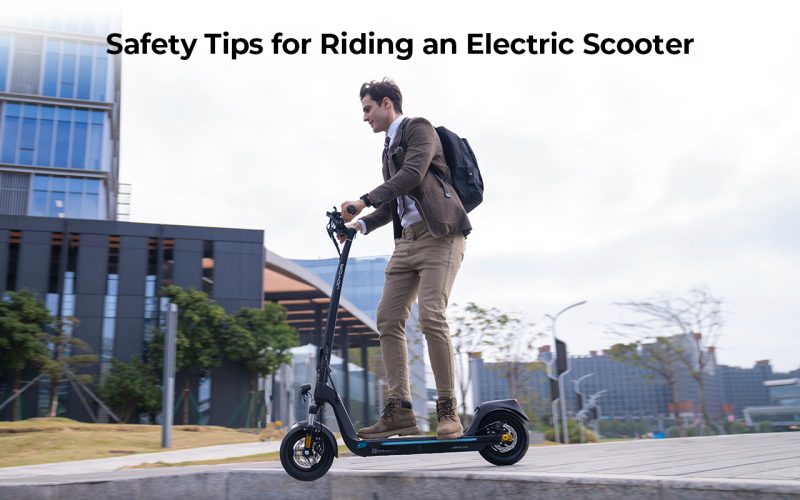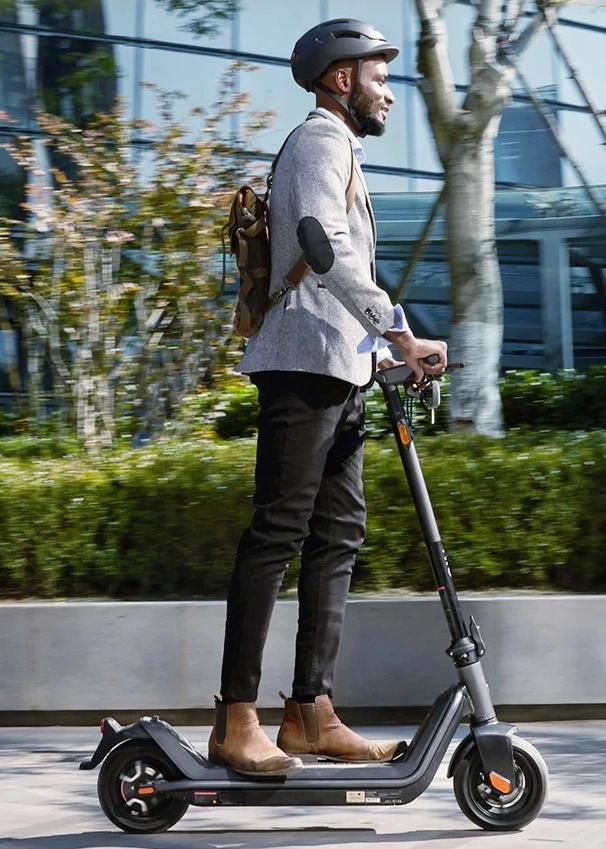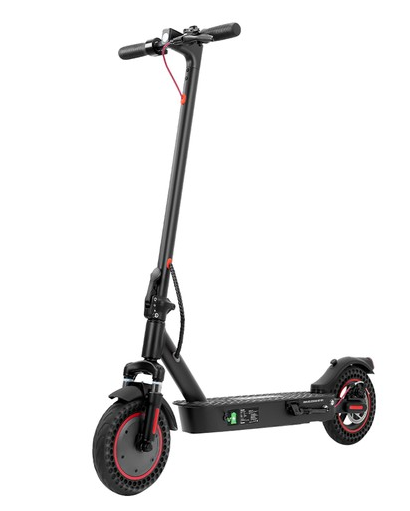With the diversified development of urban transportation, electric scooters, as a new type of personal transportation tool, have been loved by more and more people due to their convenience and environmental protection. However, safe riding is the prerequisite for enjoying this fun. In order to ensure that every trip can be returned safely, the following are some important safety tips for electric scooter enthusiasts to refer to.
Check the safety system of electric scooters
To ensure riding safety, first let’s take a look at the brake system of electric scooters. The brake system of electric scooters is the key to ensure riding safety, which is mainly divided into three types:
Drum Brake
Drum brake is a traditional brake system with a simple structure. The core component is a closed brake drum, which is installed on the center or hub of the wheel and rotates with the wheel. There are two or more brake shoes (also called brake blocks) inside. These shoes can move outward and press against the drum wall to slow down the rotation of the wheel through friction. When the rider operates the brake handle or pedal, a series of mechanical transmissions (usually cables or connecting rods) cause the brake shoes to move inward or outward, contact and press the brake drum, thereby achieving deceleration or stopping.
Disc Brakes
Disc brakes (also called disc brakes) are an efficient braking system similar to the disc brake systems in cars and other vehicles. Disc brakes are divided into oil brakes (hydraulic brakes): use brake fluid to transmit pressure, providing smoother and more precise braking control. Line brakes: transmit braking force through steel or synthetic fiber cables, which are less expensive. Disc brakes provide strong and stable braking force, especially in wet or muddy conditions, and perform better than drum brakes.
Electronic brake (E-Brake)
Some high-end electric scooters are equipped with EBS electronic brakes, which can provide smooth deceleration when braking and avoid the unstable feeling caused by sudden braking. EBS systems usually contain intelligent control logic that can adjust the braking force at different driving speeds.
Different types of brakes have different braking effects and advantages. When choosing an electric scooter, whether the braking system is efficient is an important consideration. In addition to the braking system, the lighting system of the electric scooter is also a guarantee for riding safety. Check whether there are headlights, taillights, turn signals, warning lights and other lighting systems to ensure safer riding at night.
Safety accessories
- Helmet: This is the most basic protective equipment, which can effectively protect the head from impact injuries.
- Gloves: Wearing gloves can increase the grip of the hands, prevent slipping, and reduce abrasions and bruises when falling.
- Knee pads and elbow pads: These protective gear can protect your joints from injury when falling, especially for beginners or when riding on complex roads.
- Reflective clothing or reflective strap: Improve visibility at night or in poor visibility conditions, making it easier for other road users to find you and avoid collisions.
Safety tips when riding
Here are some tips to follow when riding:
1. Check the vehicle status: Before traveling, check whether the brake system of the electric scooter is sensitive and effective, whether the tire pressure is normal, and whether the battery is sufficient.
2. Understand and abide by traffic rules: In areas where electric scooters are allowed on the road, local traffic regulations such as driving direction and speed limit must be followed. Pay attention to traffic signals, stop at red lights and go at green lights, do not run red lights, and do not go against the flow. When riding on the sidewalk, give way to pedestrians and keep a low speed to avoid causing panic or collisions.
3. Control speed and avoid sharp turns: Driving at high speeds will reduce reaction time and increase the risk of accidents. Adjust speed in time according to road conditions and crowd density. Sharp turns can easily lead to loss of control and fall, slow down in advance, and turn smoothly.
4. Pay attention to road conditions: Avoid riding on slippery, potholes, and gravel roads, which increase the risk of falling.
5. Stay focused and avoid distractions: Avoid using mobile phones or other electronic devices while riding, and focus on road conditions and surrounding environment. Although music can add fun, it is best to use only single-ear headphones to stay alert to surrounding sounds.
6. Stay visible: Especially at night or in low-light conditions, wear reflective clothing or install warning lights on your scooter so that other road users can notice you in advance.
Regular safety inspections
1. Electrical system inspection
- Confirm whether the battery power display is accurate and whether there is any abnormal drop.
- Check whether all wires are firmly connected, without damage, exposure or corrosion.
- Test whether the control system (such as accelerator, brake sensor) is responsive, without delay or jamming.
2. Mechanical structure inspection
- Whether the rotating parts (such as wheel bearings) are smooth, and add lubricating oil if necessary.
- Check whether the frame and folding mechanism have cracks or deformation.
- Tighten all screws and nuts, especially key parts such as handlebars, pedals, and wheels.
3. Brake system inspection
- Test whether the front and rear brakes can brake quickly and effectively without abnormal noise or drag.
- Confirm that the brake cable is not loose, and adjust the brake pad or drum brake clearance to the appropriate position.
4. Tire inspection
- Observe the wear of the tire. If it is severely worn or cut, it should be replaced in time.
- Check whether the tire pressure meets the normal value and maintain the appropriate inflation volume.
5. Steering system inspection
- Ensure that the steering rod is flexible and unobstructed, can be adjusted normally, and the locking mechanism is reliable.
6. Cleaning and maintenance
- After turning off the power, use a damp cloth or soft brush to clean the body, and avoid using corrosive detergents.
- Clean the stones or debris in the tire pattern to maintain the tire grip.
Keep the charging port dry and clean, and ensure that the dust plug is well sealed.
7. Battery maintenance
- Regularly (such as every 1-3 months) charge the battery that has not been used for a long time to about 80% to avoid complete discharge or overcharging of the battery.
- Pay attention to the battery temperature and avoid charging in too high or too low environments.
8. Safety check
- Confirm whether the lighting system (such as headlights and taillights) is working properly to improve night driving safety.
- Check whether the warning bell or horn can be used normally.
When performing the above inspections, if you find any problems or are not sure how to deal with them, it is best to contact professional after-sales service for repair or consultation to ensure the safe use of the scooter.
iScooter i9 Max Electric Scooter
- 10 Inch Honeycomb Tire
- 500W Motor
- 36V 10Ah Battery
- 25km/h Max Speed
- 30-40km Max Range
- Dual Shock Absorption
- Smart APP Control
JOYOR A5 Folding Electric Scooter
- 8 Inch Tires
- 350W Motor
- 36V 13Ah Battery
- 25km/h Max Speed
- 35km Max Range
- 9.5” Wheels
- 350W Rated Motor
- 25km/h Max Speed
- 50km Max Range
- APP Control














